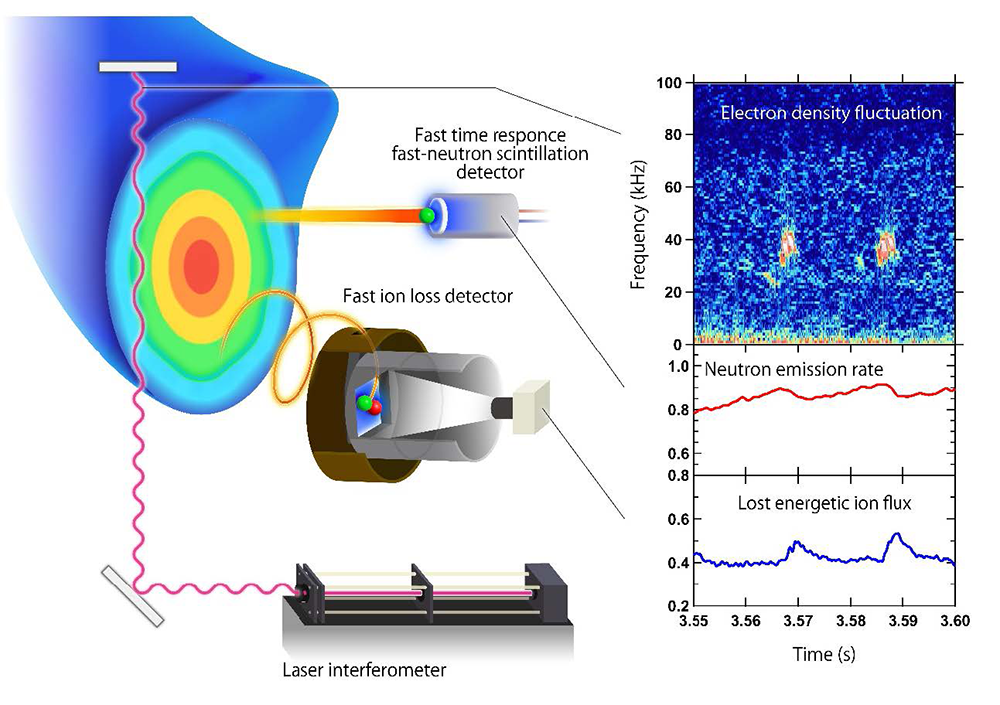Simultaneous observation of the spatial distribution of energetic-particle-driven magnetohydrodynamic instabilities and transport of energetic particles
The spatial distribution of energetic-particle-driven magnetohydrodynamic instabilities and energetic particle transport through particle-wave interactions were simultaneously observed by using a laser interferometer, a high-time response fast neutron scintillation detector and a fast ion loss detector in a deuterium plasma experiment in the Large Helical Device. These results provide important insights into the understanding of alpha particle confinement in fusion reactors.

In future fusion reactors, the transport of alpha particles by alpha-particle-driven magnetohydrodynamic instabilities may cause local damage to the first wall. To understand the transport of alpha particles in future fusion reactors, experiments with energetic particles such as beam ions have been conducted in current fusion devices. To accurately predict the transport of alpha particles by alpha-particle-driven magnetohydrodynamic instabilities in future fusion-burning plasmas, it is essential to compare experimental results with numerical simulations. To improve the accuracy of a numerical simulation, we need experimental data on the spatial distribution of the magnetohydrodynamic instabilities and the transport of energetic particles obtained simultaneously.
With the aim of understanding the confinement of alpha particles in future fusion-burning plasmas, the research team conducted an experimental study in deuterium plasma experiments in the Large Helical Device. The team used a laser interferometer to obtain the spatial distribution of the magnetohydrodynamic instabilities, a high-time response fast-neutron scintillation detector to measure the total amount of beam ions confined in the plasma, and a fast ion loss detector to measure the velocity information of the beam ions that escaped from the plasma.
By electron density fluctuation measurements with a laser interferometer, we obtained the spatial distribution of the magnetohydrodynamic instabilities, composed of three different frequencies. Comparison with numerical simulations based on experimental data showed that the observed instabilities are classified as an Alfvénic Avalanche. We also observed a decrease in the neutron emission rate and an increase in the energetic ion loss flux associated with the magnetohydrodynamic instabilities. These indicate that the beam ions escape from the plasma due to the magnetohydrodynamic instabilities driven by the beam ions. In addition, from the relation between the amplitude of the waves and the decreased rate of the neutron flux, we showed that the energetic particles resonating with the waves were strongly transported. These results provide important insights into the understanding of alpha particle confinement in fusion reactors.
The results of this research have been published on September 29, 2022 in Nuclear Fusion, a journal on controlled thermonuclear fusion by the International Atomic Energy Agency.
